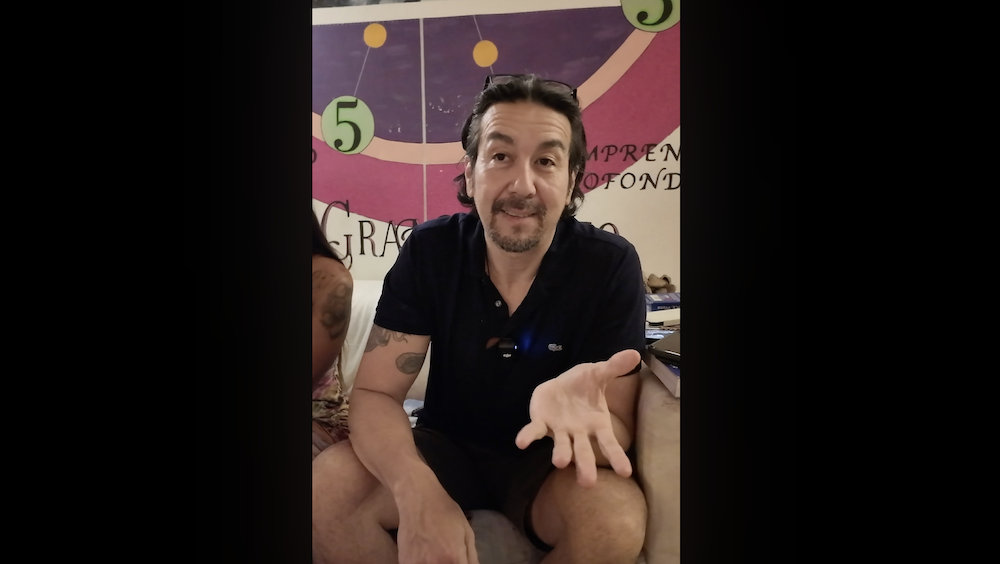This is one of the tool I currently use the most as a framing method to understand the personal process of a client. It is a simple geometric pattern I learned for the first time in my Integrative Psychotherapy Master training that was the foundational framework during the whole training. Since then I have been using it in my practice and retreats realizing it is a very useful and simple method to be able to find a quick frame into accessing personal process through the narrative of clients. This triangle allows you to identify key aspects of a process and also guides you on how to approach your listening, comprehension and intervention of the process the person is going through.
In every journey of healing and self-discovery, there comes a moment when we begin to see how much of our life is guided by unconscious patterns — automatic thoughts, limiting beliefs, and self-protective strategies that once kept us safe but now hold us back.
One of the most effective ways to bring awareness to these patterns is through integrating modern cognitive techniques with a deeper understanding of emotional wounds and inner protection mechanisms.
In this article, I’ll introduce a simple yet powerful framework — The Triangle of Awareness: Cost – Wound – Strategy — and show how it can be combined with insights from The Feeling Good Handbook by Dr. David D. Burns to support facilitators, therapists, and students in their personal and professional growth.
Understanding the Triangle
At the core of this approach lies a simple idea:
Every limiting belief or recurring emotional struggle can be traced through three interconnected dimensions:
- Strategy: the pattern or belief we use to protect ourselves from pain.
- Wound: the emotional injury or unmet need underneath that pattern.
- Cost: the personal, relational, and spiritual price of continuing to live from that old protection.
These three points form a triangle of awareness, guiding both facilitator and client from the surface of thought toward the depth of healing and integration.
1. The Strategy: The Protection Mechanism
Every defensive pattern begins as an intelligent adaptation.
Perfectionism, control, people-pleasing, emotional detachment — all are ways the psyche once learned to avoid rejection, failure, or emotional overwhelm.
In cognitive therapy, these protective thoughts appear as automatic thoughts — instant interpretations of events that feel true but often reflect fear rather than reality.
Facilitator’s Role:
Bring gentle curiosity to the strategy, not judgment.
Ask:
- “What are you telling yourself right now?”
- “What are you trying to avoid or protect yourself from?”
- “How has this belief helped you survive in the past?”
Recognizing the strategy as a past survival tool allows compassion to enter. It shifts the process from “What’s wrong with me?” to “What did I learn to do to stay safe?”
2. The Wound: The Emotional Origin
Beneath every strategy lies the wound — the deeper layer of pain, unmet need, or emotional memory that the strategy defends against.
It’s here that the work moves beyond cognitive reframing into emotional integration.
When a client says, “If I fail, it means I’m worthless,” the real wound may be the early experience of conditional love or shame. The mind built a strategy (“I must always succeed”) to protect against feeling that pain again.
Facilitator’s Role:
Invite presence, empathy, and slowness.
Ask:
- “If that belief were true, what would it mean about you?”
- “When did you first feel something like this?”
- “What feeling do you avoid when this pattern appears?”
The goal here is not to analyze, but to feel — to let the old pain be met with the adult self’s compassion and awareness.
This is where integration truly begins.
3. The Cost: The Price of Protection
Every strategy carries a cost.
It may have protected us as children, but in adulthood it limits our capacity to connect, express, and live freely.
Burns’ Cost-Benefit Analysis exercise mirrors this perfectly: writing down the advantages and disadvantages of holding onto a belief helps the client see how it now creates suffering.
Facilitator’s Role:
Make the cost visible — gently, without pushing for change.
Ask:
- “How does this belief affect your peace, energy, and relationships?”
- “What does it cost you to keep protecting yourself this way?”
- “What might become possible if you no longer needed this defense?”
Awareness of the cost naturally opens the door to transformation.
The psyche releases what no longer serves when it feels seen, not forced.
4. Integration: Compassion and Reframing
Once the wound is met and the cost is recognized, the mind and heart are ready for integration — replacing the old survival belief with a truer, kinder, and more conscious perspective.
Here, Burns’ Socratic questioning blends beautifully with therapeutic reparenting:
- “What would you say to the younger version of you who felt this way?”
- “Can you see that this belief made sense back then but isn’t needed now?”
- “What would it feel like to believe something more compassionate and true?”
Integration is not just intellectual insight — it’s emotional coherence.
It’s the moment when the body, mind, and soul align in the recognition: “I am safe now. I no longer need to live from fear.”
5. Reinforcement: Living the New Truth
Transformation becomes real when it’s practiced.
Encourage clients or students to translate insight into daily action:
- Speaking truthfully instead of pleasing.
- Resting instead of overperforming.
- Asking for help instead of isolating.
Ask:
- “What would it look like to live from this new truth?”
- “How will you remember this shift when old patterns arise?”
Reinforcement turns awareness into embodiment — the true goal of integration work.
The Mnemonic Tool: S.W.C.I.R.
To make this process easier to remember during a session or group facilitation, use this simple sequence:
| Letter | Step | Focus | Guiding Question |
|---|---|---|---|
| S | Strategy | Identify the protection | “What do you do to stay safe?” |
| W | Wound | Contact the pain | “What feeling are you avoiding?” |
| C | Cost | Recognize the price | “What is this costing you now?” |
| I | Integration | Bring compassion and new truth | “What new belief feels more loving?” |
| R | Reinforcement | Anchor it in life | “How can you live this new truth?” |
This S.W.C.I.R. model can serve as a mnemonic map for therapists and facilitators, guiding them naturally from cognition to emotion, from insight to embodiment.
The Essence of Integration
Healing is not about eliminating our strategies or erasing our past wounds.
It’s about seeing them clearly, understanding their origins, and bringing them into alignment with our present truth.
As facilitators and therapists, our task is not to fix but to witness — to hold the client’s process in a field of curiosity, compassion, and coherence.
When awareness is present, transformation happens by itself.
Final Reflection
The Triangle of Awareness reminds us that behind every limiting belief lies a wounded child, a protective strategy, and a hidden longing for freedom.
When we meet all three with presence and love, we no longer need to “heal” — we simply remember who we truly are.







